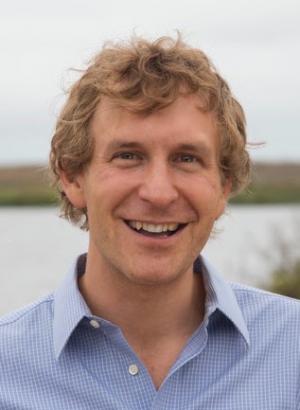
Specialization
Environmental economics, Ecological economics, Land systems science
Faculty in Environmental Studies
Education
- Ph.D., Environment and Resources, Stanford University
- M.A., Economics, Stanford University
- B.A., Environmental Studies, Economics and Politics, Claremont McKenna College
Bio
Professor Heilmayr joined the Environmental Studies Program as an Assistant Professor in 2016. He was a postdoctoral fellow in the Carlson Lab in the University of Hawaii’s Department of Natural Resources and Environmental Management and earned his Ph.D. from the Emmett Interdisciplinary Program for Environment and Resources at Stanford University. His nonacademic career has stretched from field botany in the Sierra Nevada to climate policy analysis and advocacy in Washington, DC.
Research
As an interdisciplinary environmental scientist, Robert Heilmayr combines approaches from economics, geography and ecology to explore the way society uses and governs natural resources.
Projects
Reducing deforestation through nonstate governance
Global markets for agricultural products, timber and minerals are critically important drivers of deforestation. However, there is increasing hope that the global supply chains driving land use change may also provide unique opportunities to halt deforestation. Market campaigns, deforestation moratoria and certification schemes have all been promoted as powerful tools to achieve conservation goals. Despite the excitement about such nonstate, market-driven (NSMD) governance regimes, there have been relatively few opportunities to quantify their ability to deliver on promised conservation outcomes. By combining remote sensing and econometrics, I have quantified the impacts of nonstate governance in diverse production systems including Chile's timber sector and palm oil production in Southeast Asia.
Impacts of plantation forestry
Historically, natural forests provided society with all of its timber and fiber. However, the past half-century has seen a rapid shift towards reliance on intensively managed, planted forests. Having expanded at a rate of five million hectares per year for the past decade, planted forests now constitute more than seven percent of all forests and produce more than half of the world’s roundwood. Environmental optimists often express a hope that the rapid expansion of plantations has the potential to dramatically reduce pressure on natural forests. However, case studies conducted in countries experiencing rapid plantation expansion often highlight the risk of direct conversion of natural forests to plantations. This conflict highlights two important interactions between plantations and natural forests: plantation forests compete for land with natural forests, but they can also ease demand for forest products from natural forests. My research uses a combination of theoretical microeconomic models and remote sensing to explore the impact of plantation forest expansion on natural ecosystems.
Land use change in Chile
Whereas forests throughout much of the global South were exposed to widespread deforestation at the end of the 20th Century, Chile experienced an expansion in tree cover. As one of the only South American countries to experience such a forest transition, careful analysis of Chile's experience may yield lessons to guide the creation of effective policies to slow deforestation elsewhere. Working with collaborators at the Universidad de Concepción's Laboratorio de Ecología de Paisaje, I have developed high resolution maps of Chilean land use change between 1986 and 2011. We have used these maps to quantify the impacts of public and private policies on land use change, as well as assess the ecological changes that have occurred across the landscape.
Publications
- Heilmayr, Robert; Echeverría, Cristian; Fuentes, Rodrigo; Lambin, Eric F. “A plantation dominated forest transition in Chile,” Applied Geography, Forthcoming.
- Waroux, Yann le Polain de, Rachael D. Garrett, Robert Heilmayr, and Eric F. Lambin. 2016. “Land-Use Policies and Corporate Investments in Agriculture in the Gran Chaco and Chiquitano.” Proceedings of the National Academy of Sciences 113 (15): 4021–26. doi:10.1073/pnas.1602646113.
- Heilmayr, Robert, and Eric F. Lambin. “Impacts of Nonstate, Market-Driven Governance on Chilean Forests.” Proceedings of the National Academy of Sciences 113 (11): 2910–15. doi:10.1073/pnas.1600394113. 2016.
- Heilmayr, Robert. “Conservation through Intensification? The Effects of Plantations on Natural Forests.” Ecological Economics 105: 204–10. 2014.
- Heilmayr, Robert; Bradbury, James. “Effective, efficient or equitable: using allowance allocations to mitigate emissions leakage.” Climate Policy 11 (4): 1113-1130. 2011.
- Houser, Trevor; Bradley, Rob; Childs, Britt; Werksman, Jake; Heilmayr, Robert. Leveling the Carbon Playing Field: International Competition and U.S. Climate Policy Design, Peterson Institute for International Economics and World Resources Institute, 2008.
Courses
ENV S 30: Introduction to Environmental Economics